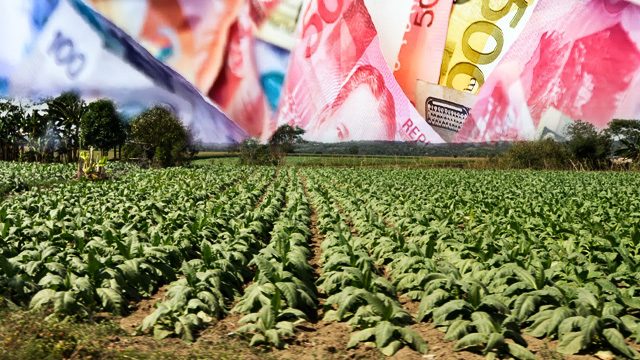SUMMARY
This is AI generated summarization, which may have errors. For context, always refer to the full article.

MANILA, Philippines – Ilocos Norte Governor Imee Marcos has been accused of misusing the tobacco funds allotted to her farmer-constituents.
House Majority Leader Rodolfo Fariñas on May 3 said that he discovered checks for advances amounting to P66.45 million from tobacco funds. (READ: House panel wants Imee Marcos to explain P66.45M in ‘misused’ tobacco funds)
The money was allegedly used by the provincial government for motor vehicles – 40 mini-cabs for barangays, 5 second-hand buses, and 70 Foton mini-trucks for municipalities.
If these purchases are not allowed under the law, how then can tobacco funds be utilized?
What is the tobacco fund?
The tobacco fund was first created through Republic Act No. 7171 signed by then president Corazon Aquino in 1992.
The law says 15% of excise taxes from locally manufactured Virginia-type cigarettes shall be allotted for a special support fund for tobacco farmers who are “the nucleus of an industry which generates a sizeable income.”
Four years later in 1996, then president Fidel V. Ramos signed RA 8240 that gave 15% of excise taxes from burley and native tobacco to provinces that produce them.
What provinces benefit from these funds?
RA 7171 says that the funds are distributed to the provinces of Abra, Ilocos Norte, Ilocos Sur, and La Union.
RA 8420, meanwhile, lists 16 provinces that benefit from the tobacco funds:
- Abra
- Kalinga
- Mountain Province
- Ilocos Norte
- Ilocos Sur
- La Union
- Pangasinan
- Cagayan
- Isabela
- Nueva Viscaya
- Quirino
- Tarlac
- Occidental Mindoro
- Misamis Oriental
- Maguindanao
- North Cotabato
The allotted funds from the excise taxes is divided among beneficiary provinces.
A beneficiary-province, the laws says, must have an average annual production of leaf tobacco of no less than one million kilos.
What projects can the fund be used for?
Tobacco funds, however, cannot be used just for anything – at least that’s what the law says.
It can only be utilized to develop the capacity and capability of tobacco farmers through the following:
- Cooperative projects that will enhance the quality of cigarettes, increase productivity and the market, and increase the income of farmers
- Livelihood projects can also be started using the tobacco fund as capital to develop alternative farming systems for farmers
- Agro-industrial projects that will help tobacco farmers to eventually take the helm as owners of processing systems in the industry
- Infrastructure projects such as farm-to-market roads to ease transportation and lessen costs
What are the issues surrounding the Tobacco fund?
Although the law sets tobacco funds to be used for a certain set of projects, it’s not always followed. The use of tobacco funds has been marred with several issues since it was established at least 24 years ago.
Tobacco funds were also put under the spotlight during the impeachment trial of President Joseph Estrada. Former Ilocos Norte governor Chavit Singson accused Estrada of taking P130 million out of the P200-million tobacco excise share of the province.
Meanwhile, according to an investigation by Newsbreak in 2009, government auditors found that the local government of Ilocos Sur “misused, misappropriated, or failed to account for at least P1.3 billion of the tobacco fund.”
The Commission on Audit further pointed out that the projects built using the tobacco fund allotted for the province – such as a tomato paste plan – does not fall under the classifications allowed by the law. (READ: P1 billion in tobacco funds misused)
The demand for tobacco, meanwhile, has harmed forests in North Luzon.
A Newsbreak piece published in 2009 exposed the flawed government monitoring “of fuel wood consumption for tobacco curing allows for unhampered tree-cutting.” Farmers consumed about 13,734 cubic of meters of fuel wood just to produce the required million kilos of tobacco leaves. – Rappler.com
Add a comment
How does this make you feel?
There are no comments yet. Add your comment to start the conversation.